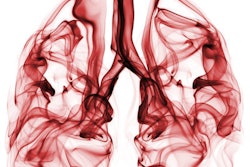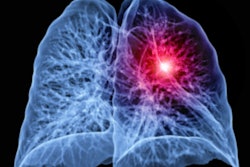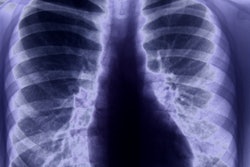
Six-week follow-up CT exams of patients with COVID-19 show lingering damage to lung tissue in 88% of patients who were hospitalized, according to a presentation delivered September 7 at the virtual European Respiratory Society (ERS) International Congress.
The damage healed over time, with visible signs of damage falling from 88% of patients at six weeks to 56% at 12 weeks, presenter Dr. Sabina Sahanic of the University Clinic of Innsbruck in Austria said in a statement issued by the European Lung Foundation.
"The bad news is that people show lung impairment from COVID-19 weeks after discharge," Sahanic said. "The good news is that the impairment tends to ameliorate over time, which suggests the lungs have a mechanism for repairing themselves."
Sahanic and colleagues reported on 86 patients hospitalized between April 29 and June 9 at the University Clinic of Internal Medicine in Innsbruck, St. Vincent Hospital in Zams, Austria, and the cardiopulmonary rehabilitation center in Münster. After being discharged from the hospital, the patients returned for follow-up at six and 12 weeks to undergo additional CT scans and echocardiograms as well as clinical exams, lab tests, and lung function tests.
Average patient age was 61, and almost half were current or former smokers, Sahanic's group noted. Of the 86 patients, 65% were overweight or obese, 21% were admitted to the intensive care unit, and 19% had mechanical ventilation. Average hospital stay was 13 days.
At the six-week follow-up visit, 88% of patients still showed lung damage on CT, specifically ground-glass opacities, and more than half had at least one continued symptom, mostly breathlessness (47%) and coughing (15%), the researchers found. At 12 weeks, symptoms had improved, but 56% of patients still showed lung damage on CT.
The group also found that 58.5% of patients had dysfunction of the left ventricle of the heart at the six-week follow-up. Lung function at six weeks were less than normal in the following measures (although all improved at 12-week follow-up):
- Amount of air forcibly expelled in one second (23%)
- Total volume of forcibly expelled air (28%)
- How well oxygen passes from the lungs to the blood (33%)
 CT scan of patient's lungs, showing COVID-19 damage in red. Image courtesy of study co-author Dr. Gerlig Widmann, Medical University of Innsbruck.
CT scan of patient's lungs, showing COVID-19 damage in red. Image courtesy of study co-author Dr. Gerlig Widmann, Medical University of Innsbruck.A better understanding of COVID-19's lingering pulmonary effects could help clinicians treat lung damage more quickly, according to Sahanic.
"The findings from this study show the importance of implementing structured follow-up care for patients with severe COVID-19 infection," she said. "Importantly, CT unveiled lung damage in this patient group that was not identified by lung function tests. Knowing how patients have been affected long-term by the coronavirus might enable symptoms and lung damage to be treated much earlier and might have a significant impact on further medical recommendations and advice."



















